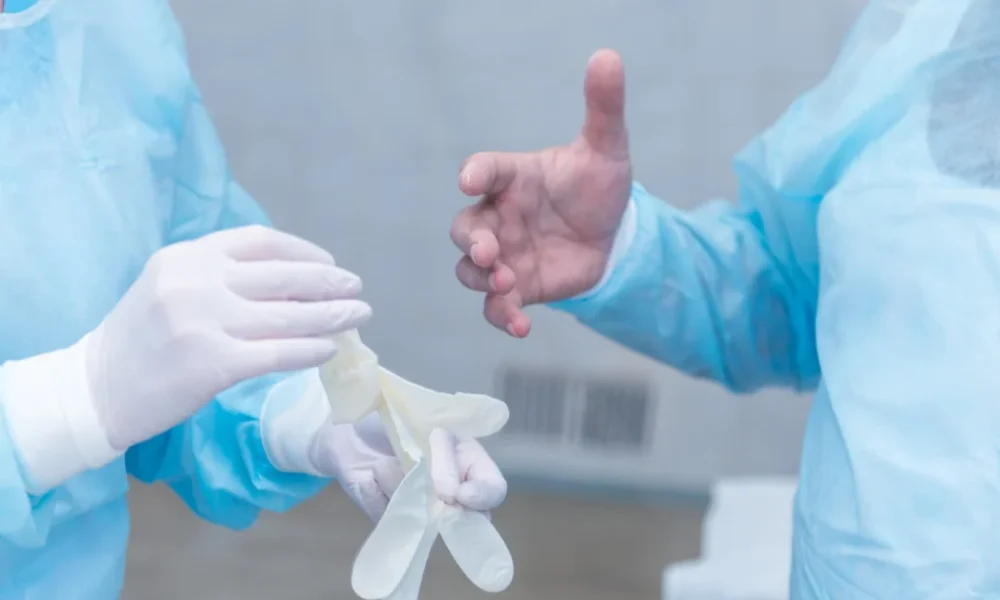
Are Your Employees Ready for Bloodborne Pathogen Incidents?
Your workers face invisible dangers every day. Bloodborne Pathogen Training protects them from serious health risks that can happen in any workplace.
Ready to build a safer workplace? Pathogen exposure prevention training teaches staff how bloodborne pathogens spread, how to avoid exposure, and what to do if exposed to infectious material.
Know the Risks
Bloodborne pathogen exposure happens in many workplaces, not just hospitals. These infectious microorganisms in human blood can cause disease in humans, including hepatitis B (HBV), hepatitis C (HCV), and human immunodeficiency virus (HIV). Your team needs to understand how these exposures occur.
A small cut or broken skin creates an entry point for dangerous viruses. Infectious microorganisms like HIV, hepatitis B virus (HBV), and hepatitis C virus (HCV) cause serious health problems. Needlesticks and other sharps-related injuries may expose workers to these pathogens.
Occupational exposure to these blood-borne pathogens requires immediate action. With proper biohazard safety instructions, your team can spot dangers before they become emergencies.
Train Your Team
Federal standards mandate that employers provide initial and annual education and training to workers. Safety training helps workers understand how infections spread and prevent transmission. Training must cover proper cleanup methods, safe disposal of sharps, and protective equipment.
OSHA compliance training requires clear, hands-on instruction that workers can follow easily. The Bloodborne Pathogens course is meant for individuals who must comply with the Occupational Safety and Health Administration (OSHA) regulation 29 CFR 1910.1030. This includes doctors, nurses, pharmacists, medical assistants, paramedics, and tattoo artists.
When your whole team receives infection control education, safety becomes everyone’s responsibility. This reduces accidents and protects everyone at work. Occupational safety courses build knowledge that saves lives.
Use Protective Gear
Personal protective equipment (PPE) is needed when dealing with hazardous biological materials. Gloves, masks, face shields, and gowns create barriers between workers and potential exposure. Safety equipment training shows workers when and how to use these items correctly.
Gloves must be worn when handling contaminated materials. Choose the right gear for different tasks. Universal precautions require treating all blood and body fluids as potentially infectious. This standard precaution protocol protects everyone.
Check protective equipment regularly to make sure it works properly. Using barrier protection correctly reduces exposure risk and keeps everyone safer. Protective barrier systems work only when used correctly.
Follow Safety Protocols
The standard has provisions for exposure control plans, engineering and work practice controls, hepatitis B vaccinations, hazard communication and training, and recordkeeping. Workers need training on proper procedures for handling spills, disposing of contaminated materials, and cleaning affected areas.
Incident reporting procedures must be followed quickly after any exposure. These steps reduce further contamination and protect others from harm. Always follow established guidelines, even under pressure.
OSHA requires employers to implement an exposure control plan for the worksite with details on employee protection measures. Your workplace safety protocols must include exposure response procedures that everyone can follow.
Keep Records Updated
Employers must maintain records of training sessions, exposure incidents, and medical evaluations related to occupational exposure to bloodborne pathogens. Training documentation tracks who completed training and when refresher courses are needed.
Review records regularly to ensure no worker is missed. Updated documentation helps identify areas needing more training. Records provide references during investigations or health inspections.
Regulatory compliance requires proper record-keeping that shows your commitment to safety and helps prevent future risks. Documentation management keeps your program on track.
Complete Guide to Bloodborne Pathogen Training
Bloodborne Pathogen Training protects workers from serious health risks. Proper training, protective equipment, and safety protocols reduce exposure risk.
Medical waste safety and updated records help keep your team prepared. With the right approach, you create a safer environment for everyone. Infection prevention programs work when everyone participates.
Training your team on biohazard prevention shows your commitment to worker health. Get certified today and protect your workplace from invisible dangers.
All information is verified through current OSHA standards and official government sources as of July 2025.
